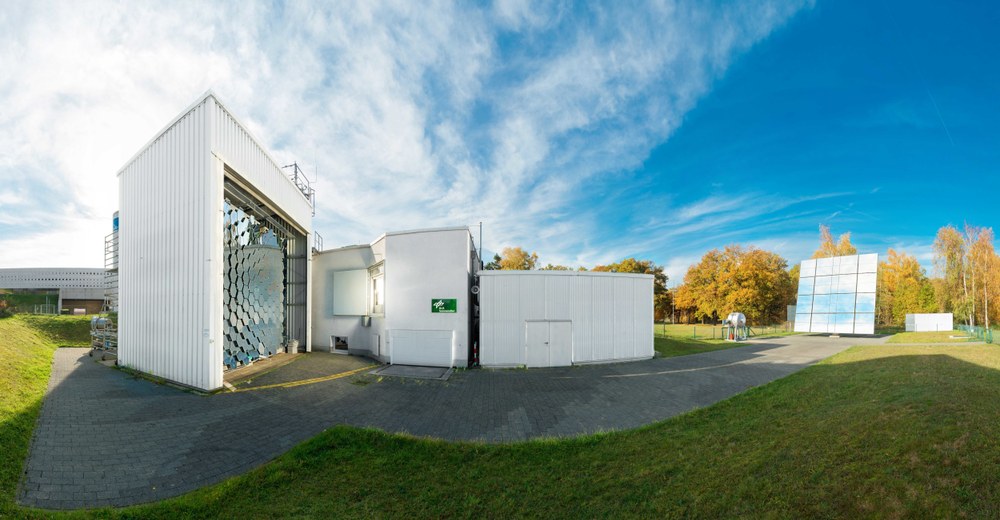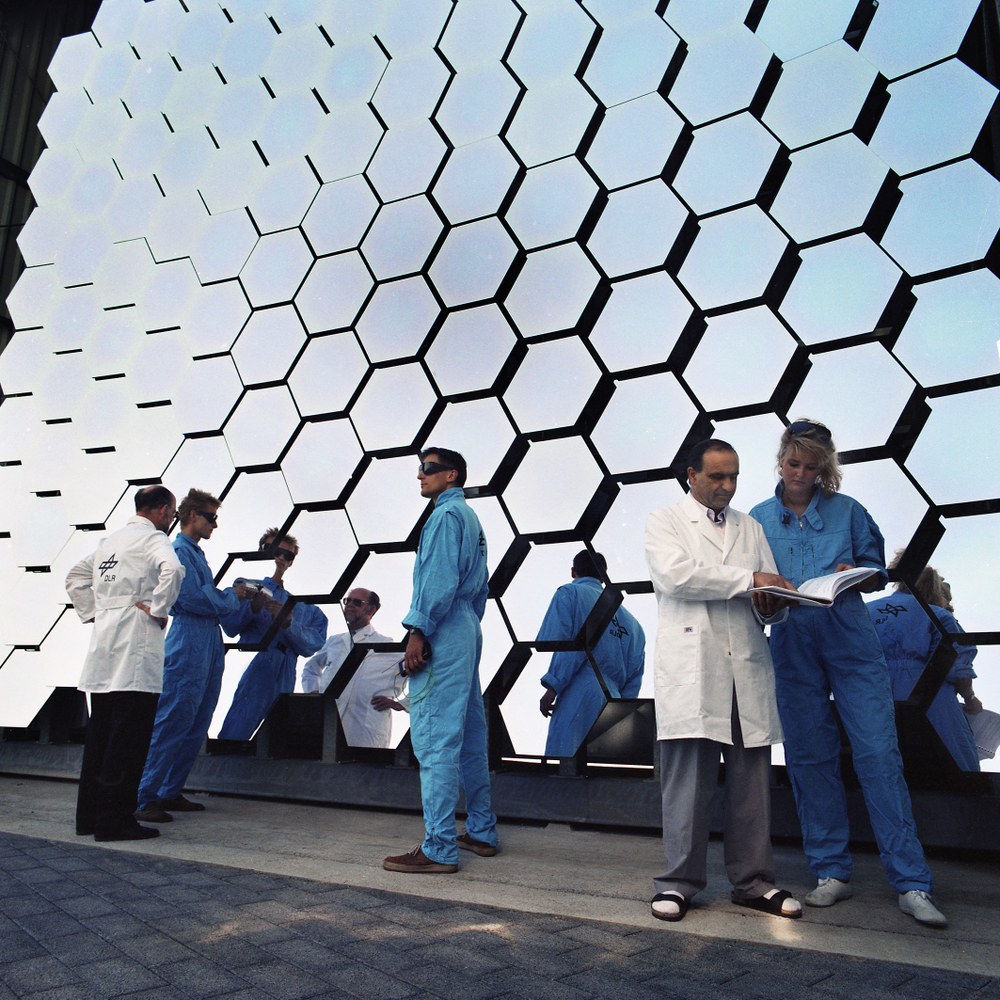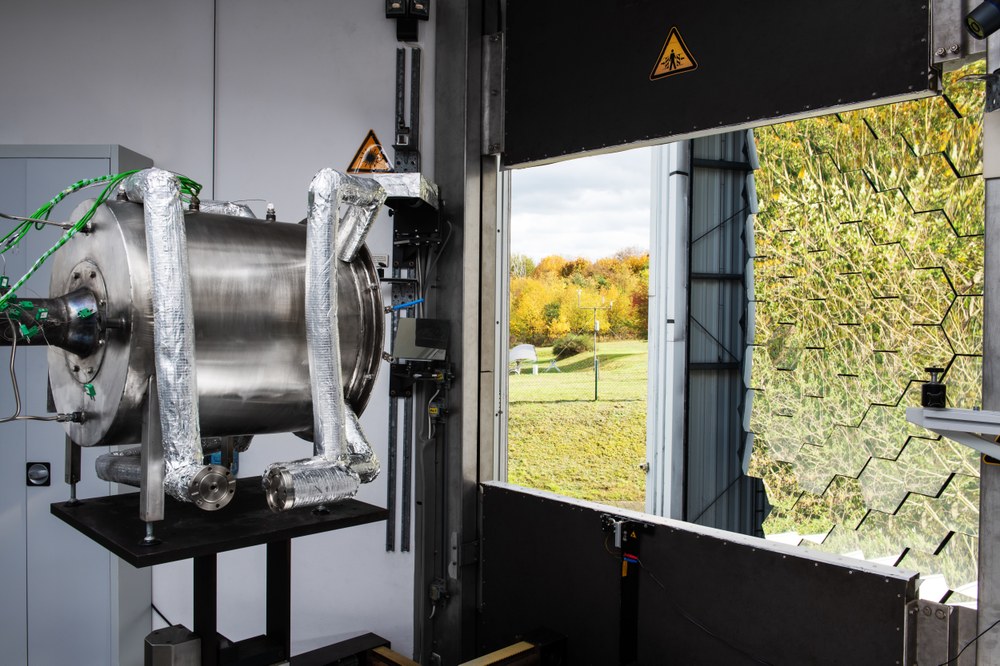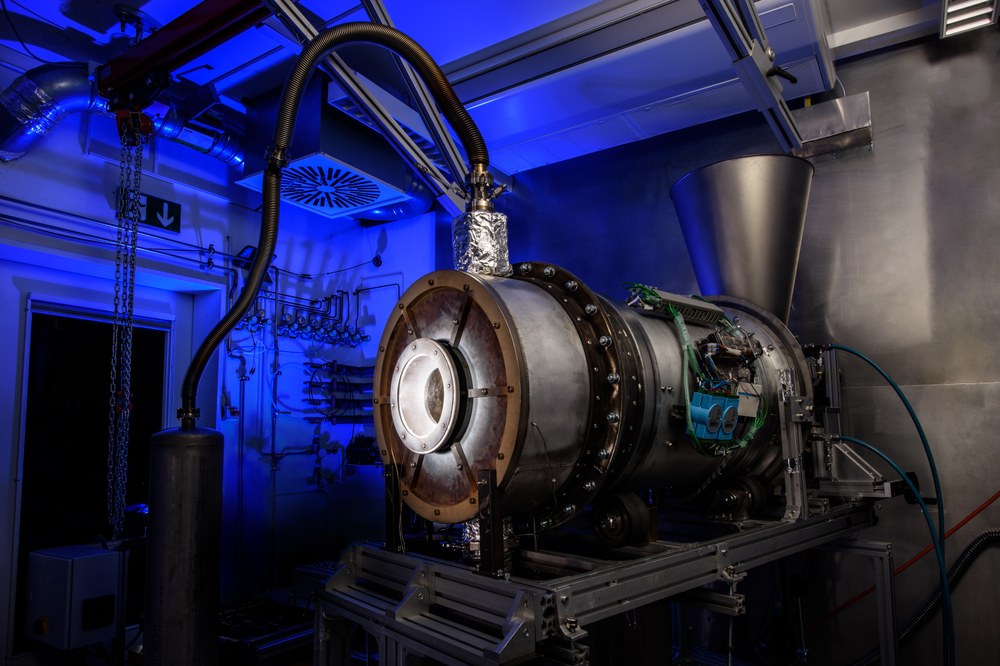30 years of research and innovation: the Solar Furnace celebrates its anniversary

- The DLR Institute of Future Fuels is celebrating a special anniversary this year: our large-scale research facility in Cologne-Porz, which houses the High-Flux Solar Furnace and Solar Simulator, has turned 30 years old.
- Since its commissioning in 1994, the facility has enabled a large number of experiments and research projects and has established itself as a valuable resource for the research and application of concentrated sunlight.
- It offers researchers the opportunity to utilise sunlight in an extraordinary way.
Unique technology for versatile applications
In the High-Flux Solar Furnace, sunlight is concentrated to up to 5,000 times its natural intensity using an external heliostat and a concentrator. This enables experiments to be carried out at extremely high temperatures of up to 1,800 degrees Celsius, which are essential for analysing a wide range of materials and processes.
The High-Flux Solar Simulator, which generates artificial sunlight with xenon short-arc lamps, complements the solar furnace. With a power density of up to four megawatts per square metre, long-term and sequential experiments that require constant conditions can also be carried out here. This combination of natural and artificial light makes the facility unique in Germany.
Milestones in research: from hydrogen to space
A significant milestone in the history of the plant was the successful solar production of hydrogen in 2004. Under laboratory conditions, researchers succeeded in producing hydrogen from concentrated sunlight, water and CO2. This innovative approach was an important step on the way to a CO2-neutral energy supply and formed the basis for further projects to store solar energy in chemical energy carriers.
The facility has also made valuable contributions to space research. Space components were tested in the solar furnace under realistic conditions to check their suitability for extreme environments. For example, components were used that were later utilised in the Bepi Colombo, Venus Express and Solar Orbiter missions. As part of the "Regolight" project, the solar furnace team was also able to develop innovative processes to produce building blocks from moon dust that are suitable for the construction of protective domes on the moon.
Transfer to industry
The large-scale research facility in Cologne has also proved to be a valuable tool for industry. In various projects, DLR researchers have been able to prove that concentrated sunlight can replace fossil fuels in industrial processes. These findings are particularly relevant for companies that want to switch their production processes to renewable energy sources in order to reduce their CO2 emissions.
The 30th anniversary of the facility is not only an opportunity to look back on past successes, but also to look ahead. At a time when the transition to renewable energies is becoming increasingly important, the large-scale research facility in Cologne is making an important contribution to the research and development of sustainable energy solutions.
We look forward to many more exciting projects!




